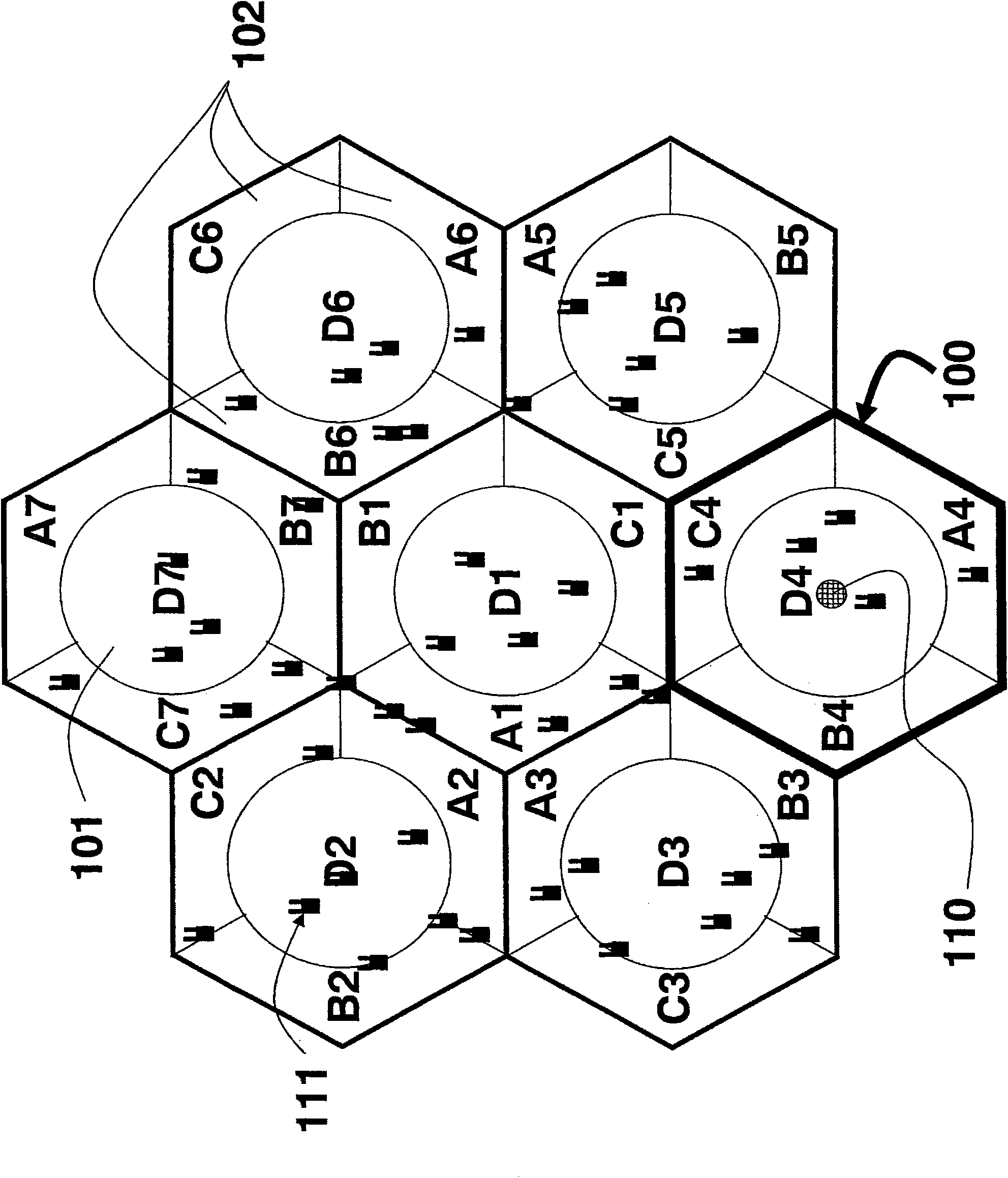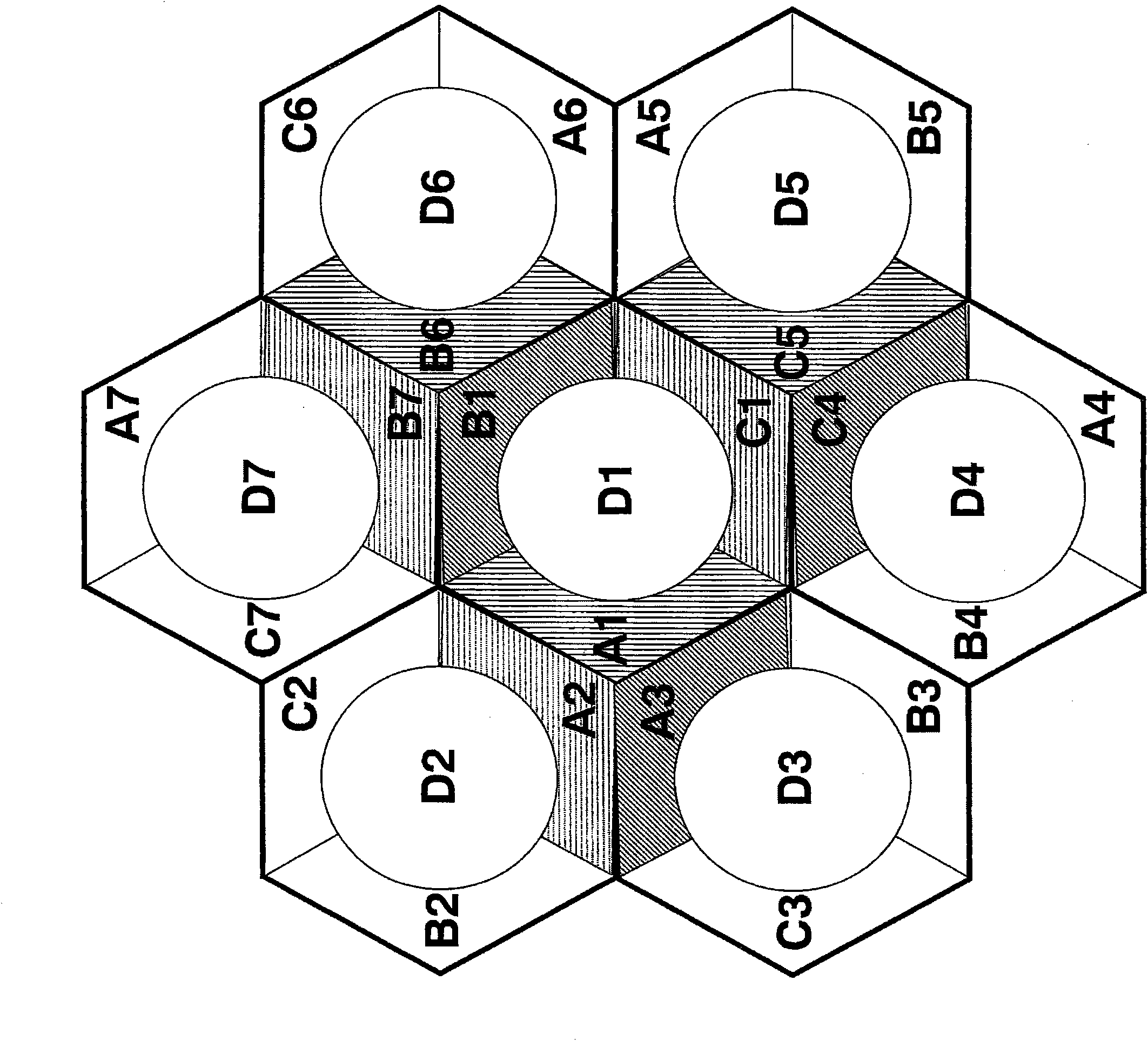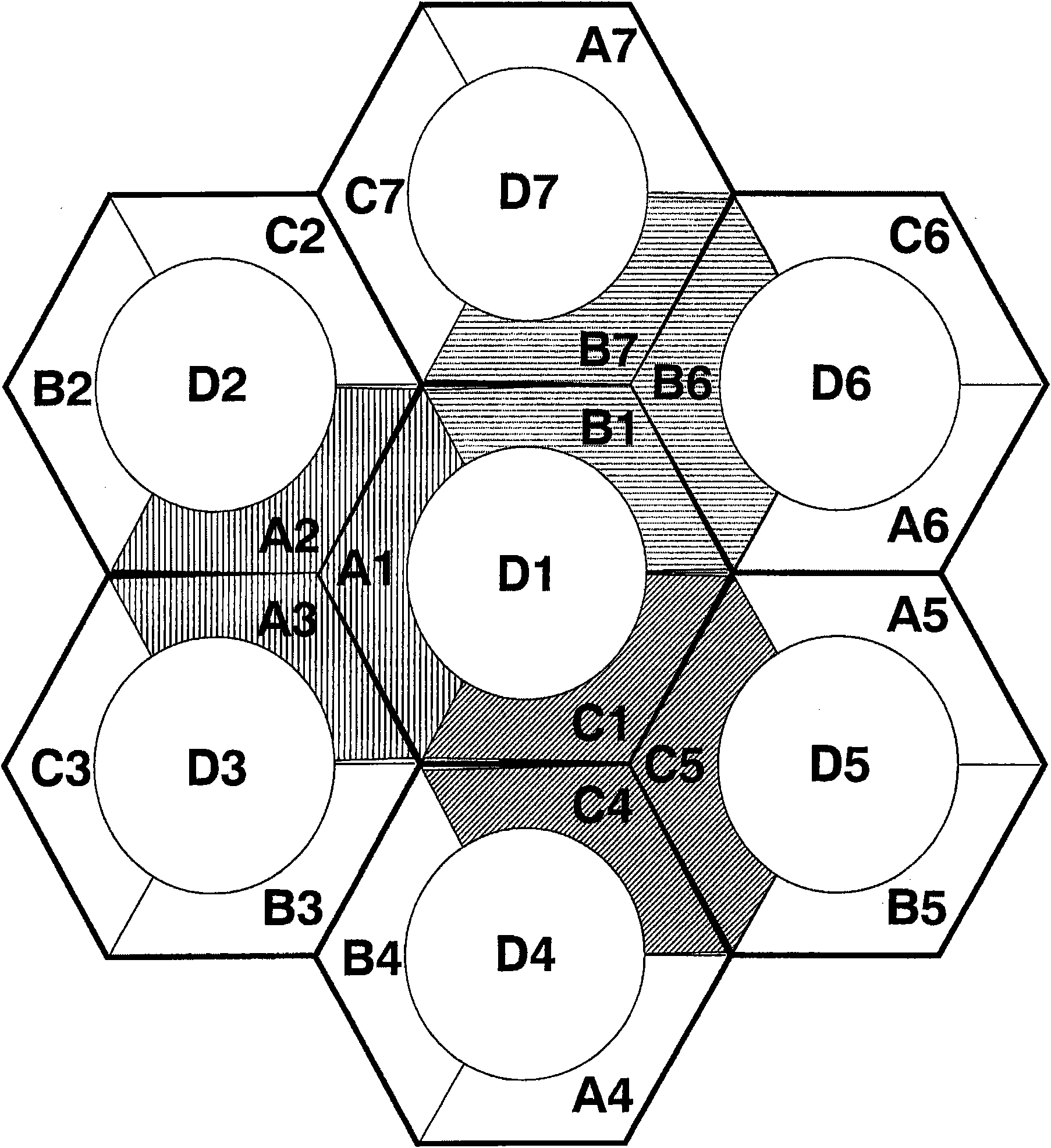Method for allocating bandwidth from radio frequency spectrum in cellular network including set of cells
A cellular network and radio frequency spectrum technology, applied in the field of dynamic wireless resource allocation, can solve the problems of reducing ICI and wasting resources
- Summary
- Abstract
- Description
- Claims
- Application Information
AI Technical Summary
Problems solved by technology
Method used
Image
Examples
Embodiment Construction
[0042] Resource allocation
[0043] Figure 1A A radio resource allocation structure according to an embodiment of our invention is shown. Figure 1A Seven cells 100 of a cellular network are shown. To simplify the figure, the area served in each cell is shown in the shape of a hexagon 100 . It should be understood that this is an approximation of the shape of the cell, eg other shapes are possible depending on the topography, topology and architecture (eg buildings) in the cell.
[0044] At approximately the center of each cell there is a base station 110 . A base station serves a mobile station (MS) 111 in a cell. It should be appreciated that the BSs may utilize the infrastructure 400 or backbone of the network to cooperate with each other, as is known in the art and described in Figure 4 shown in .
[0045] Figure 1A The configuration of can be generalized to more than seven cells. Here, the frequency reuse factor is 1. That is, each cell uses the entire bandwidth ...
PUM
 Login to View More
Login to View More Abstract
Description
Claims
Application Information
 Login to View More
Login to View More - R&D Engineer
- R&D Manager
- IP Professional
- Industry Leading Data Capabilities
- Powerful AI technology
- Patent DNA Extraction
Browse by: Latest US Patents, China's latest patents, Technical Efficacy Thesaurus, Application Domain, Technology Topic, Popular Technical Reports.
© 2024 PatSnap. All rights reserved.Legal|Privacy policy|Modern Slavery Act Transparency Statement|Sitemap|About US| Contact US: help@patsnap.com










